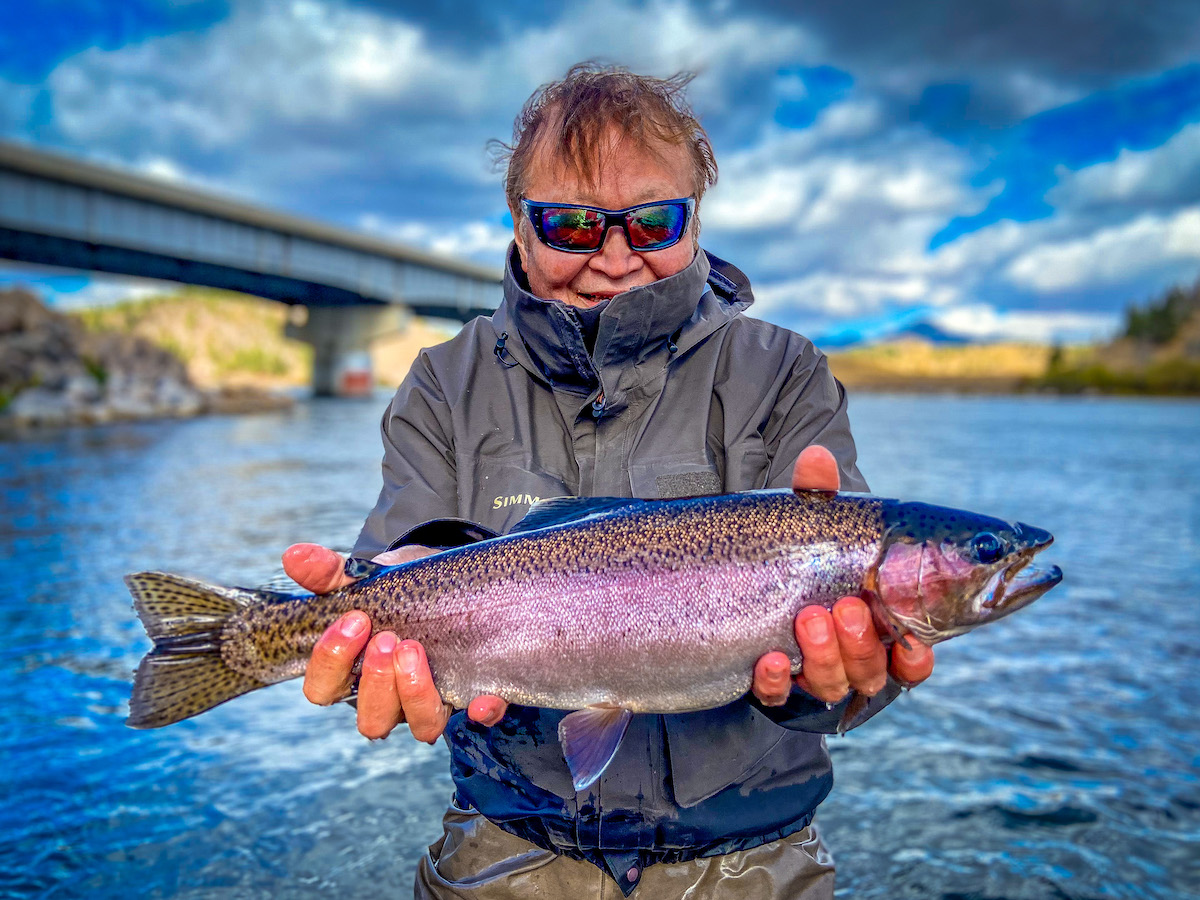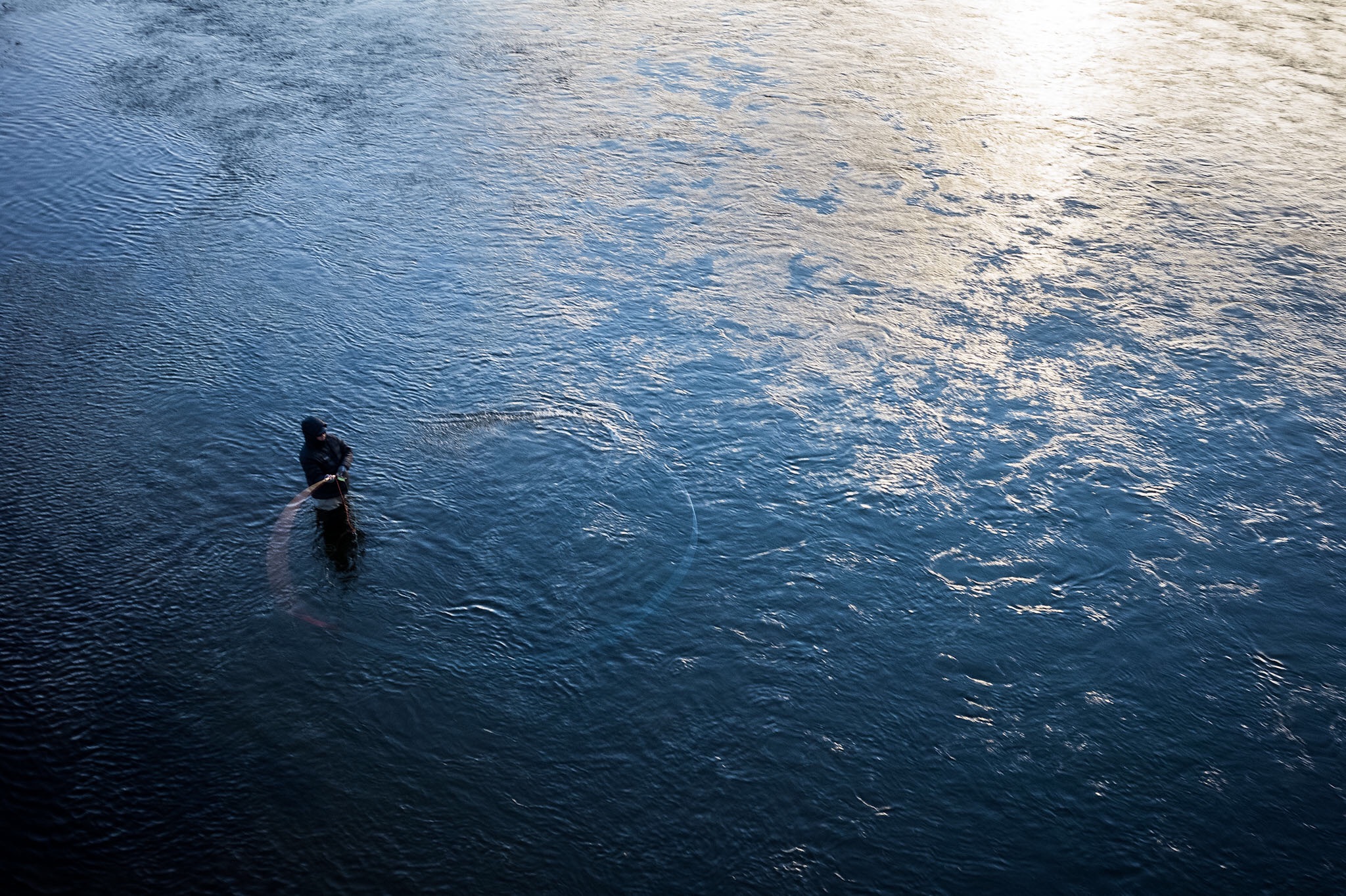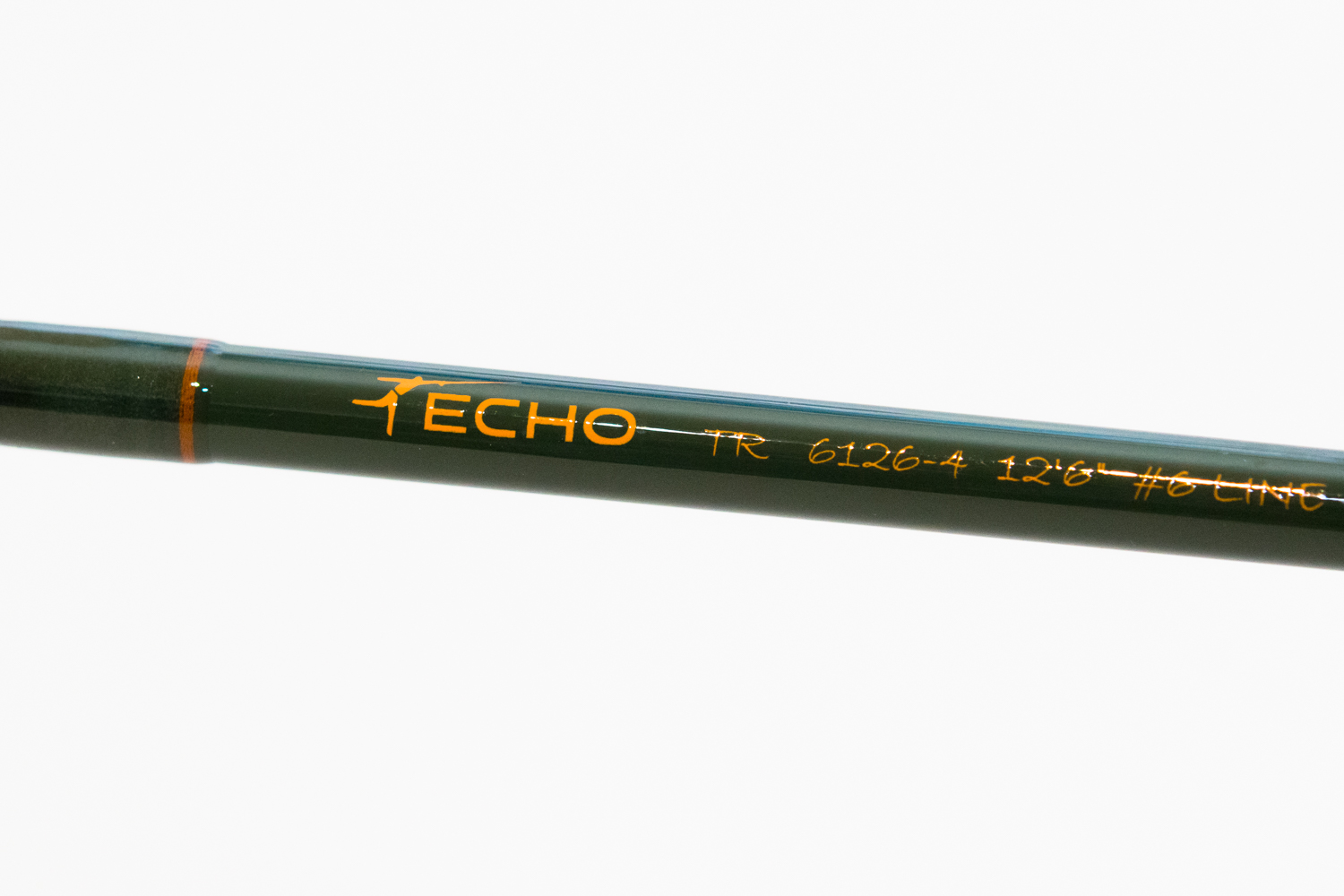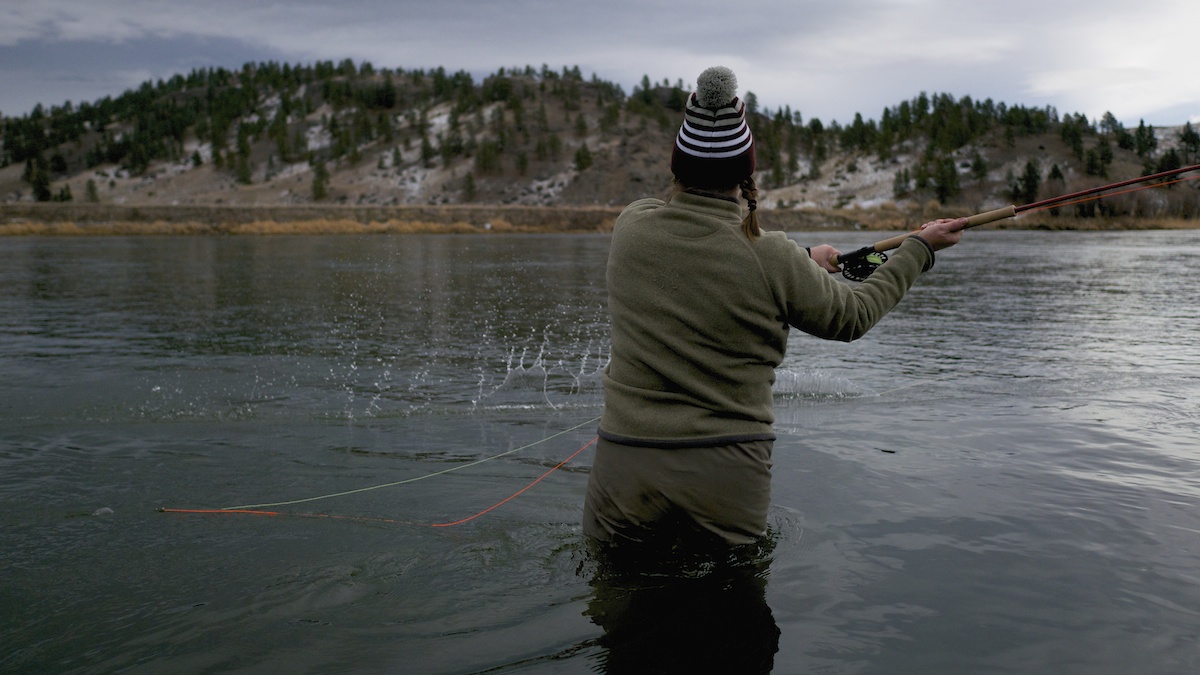We’ve started Two-handed Trout season a little earlier than normal this year. Actually, some of are swinging every month of the year, but Late October to late December are what we consider “prime time”. The fishing is pretty good right now. The fish are big and we’ve had a half dozen guided trips out this week alone. More are coming in the weeks ahead, and we consider Nov. 1 to be the real beginning of the season. It’s usually not this good until a little later, but we won’t complain. Some of you will remember the spectacularly horrible fishing we experienced during our Trout Spey Camp last October. Interestingly, we’re having similar weather a year and a week later, but much different (better) fishing conditions.
Speaking of our Trout Spey Camp, I continue to get calls and emails asking if we’re holding Trout Spey Camp again this year. The answer is NO. I don’t think 100+ people in that cold, wet, sweaty event-tent would be a responsible move. I was debating some smaller clinics this fall, but with Coronavirus cases on the straight up in Montana (and almost everywhere else), it wouldn’t be wise.
So, if you would like to get some instruction and guided fishing in with one of our 2HTROUT (Two-handed Trout) guide/instructors this fall, the best way is to go on a full day guided spey trip. Interest has been strong already, and we expect that to continue through the fall and early winter. As we are in an El Nino cycle, I hope we will continue to see some cloudy and precipitous weather which is excellent for swinging. Cool but not too cold.
2HTROUT GUIDED TRIP
If you are thinking about a Two-handed guide trip, here’s a little information, along with a few things to think about and prepare for:
- You don’t need to know anything about “spey” fishing to go on one of our two-handed trips. We will provide the gear and the instruction. You should be casting well enough to catch some fish very quickly. If you are already a spey caster, some of our guides are very experienced, and you may still learn a thing or two. And catch some fish.
- The very best way to learn how to cast a two-handed rod is on a guided trip. The reason? Because you will get put in a variety of situations on both sides of the river. Different depths, wind and current angles, water speeds, lines and flies will help you learn much faster than standing in the same spot performing the same cast in the same conditions for hours.
- All of our Two-handed fishing is “swing” fishing, and you will be wading on foot. We do not nymph or dead drift flies, nor do we fish from the boat.
- Be prepared to fish in some cold-ish weather. Wear the appropriate base and mid layers (puffies are great!) and make sure to bring a waterproof/breathable shell in the event of snow, wind and rain. You will be wading all day in water temps from the mid-40’s down to just above freezing in early January, so very good socks and bottoms are critical. Gloves and beanies are mandatory. A couple of each is a good idea. Big mittens to wear in-between spots is brilliant, and we love a fleece neck gaiter, merino wool Buff or wool scarf.
- Bring a hot beverage travel mug! Most of our guides bring coffee, or use a jetboil to make coffee. If you prefer Earl Gray or Swiss Miss, bring a few packs along! A flask of Redbreast is not a bad idea.
- Daylight hours are shorter, so be prepared to meet relatively early, and plan on fishing until dark. Lunch is typically eaten “on the run”, while rowing to the next spot (nibbled on throughout the day is probably more accurate). We like to fish hard, and we probably won’t be taking an hour break to eat.
- If you’re bringing your own rod, it makes most sense to have it ready and rigged with a Skagit Head, and have a decent range of sink tips with you. At minimum, you should carry a lite sinking (iMow light 7.5’I/2.5’T8) and medium sinking tip (5’I/5’T8). We have all of this stuff at the shop. In general a tip too light is better than one too heavy. Guides hate lending you sink tips because they often are forgotten at the end of a chilly day. We really don’t use full sinking tips a lot until mid to late winter. If you prefer to use a Scandi head, you should have a 7′ Intermediate and type3 sinking leader. Rods can be anything from 3 weight to 5 weight. If you want to use a heavier rod because it’s all you have, that’s OK too. You can also use a single handed spey set-up if you wish. A 6 weight is usually perfect. In the next few weeks we may see some excellent soft hackle opportunities, so if you have a 1 or 2 weight Spey Rod and want to swing little flies, bring it.
- If you’ve fished the Missouri you know that it is generally easy wading. But, we do swing for trout in some areas of the lower canyon that are rockier and slicker than the upper river. Feel free to bring some cleated or studded boots if that’s you preference. Guides will have mats in their boat to protect the floor from damage. If you regularly use a wading staff, bring that along as well.
- If the weather is leaning towards nasty, your guide may choose to “car fish” instead of floating. This allows us to hit specific spots that may be out of the wind easier and quicker than struggling to get the boat down the river in a strong north wind. You also get to warm up in the car between spots.
- We do not do “group floats” while spey fishing/swinging. You’re more than welcome to bring a group of anglers, but expect to spread out along the river. There won’t be a big group lunch involved.
- Lodging will become more limited as some properties close for the winter. Izaaks’ will also be closed after October, so dinner will consist of DIY, Wolf Creek or Cascade. Two person lodging that includes a kitchen can be tricky to arrange. The Craig Bar is typically open for warm brown liquid at the end of the day. Some folks choose to stay in Great Falls or Helena and eat out there. Kelli at Mo’ River Eats can also provide dinner for groups of 6 or more, as well as hot breakfast sandwiches. Julie and Sara can answer all of your lodging and dining questions when you call to book a trip.
If you’ve fished with us before and want to request a specific guide, the following is a list of our guides who do two-handed spey trips, in alphabetical order, because that puts me first.
- John Arnold
- Whitney Gould (float or jet)
- Beth Langell
- Braden Lewis
- Mike McCune (jet boat only)
- Ben McNinch
- Max Matiolli
- Eric Mondragon
- Mark Raisler
- Dwayne “Dewey” Sutphin
- Shane Wilson
Both Mike McCune and Whitney Gould are internationally known spey casting instructor/guides, and should be booked well in advance if you would like to spend a day or two with either of them.
Guided trips are $550 ($650 for Jet boat), and include lunch, flies, tackle and any gear you might need.
Deposit Policy: Beginning November 1 we lift our deposit policy (no penalty for weather cancellations), as the likelihood of a last minute cancellation due to weather increases. Cancellations will largely be dictated by your guide. Remember, like all streamer fishing, the best days are often the worst days (weather-wise).
DIY TROUT SPEY
Many of our two-handed customer do a day or two guided, then go out on their own for a day or two. You can bring a boat, rent a boat or wade fish. If you know where to go, all are effective. Our shop staff is more than happy to help you choose the right lines and flies, and tell you which parts of the river and types of water have been fishing best. Pretty easy to keep up with the fishing report here on our blog as well.
If you haven’t fished the Missouri River before, I would suggest floating so you can find the more obvious bars and islands quickly. Floating also allows you to hit both sides of the river. The frontage road is on river right, and when our prevailing wind is blowing, you’ll find yourself casting into the wind all day if you’re road fishing.
Quickie Trout Spey Report
We’re finding good fishing on the entire river right now, though the Canyon has been the least productive. Strong riffles leading into big tanks are the best spots to look for. A light Skagit tip with a black leech pattern is the safe bet, and there’s not a lot of reason to try much else. A few of our bugger patterns are working as well, including a new one, Ninch’s Red Delicious. Large soft hackles are also producing, and in the afternoon you may encounter some excellent soft hackle swinging during mayfly hatches. For that, we’d prefer a Scandi head but you could use a Skagit head and floating tip.
Big streamers are going to work, especially in the fastest runs. Some of my fall favorites include the Montana Intruder, Lil’ Kim, Kreelex and Foxee Clouser. I fished Pelican to Cascade the other day, and it was pretty good. It’s an all day affair with a two-hander, and you should try it soon before the days get too short to tackle it.




